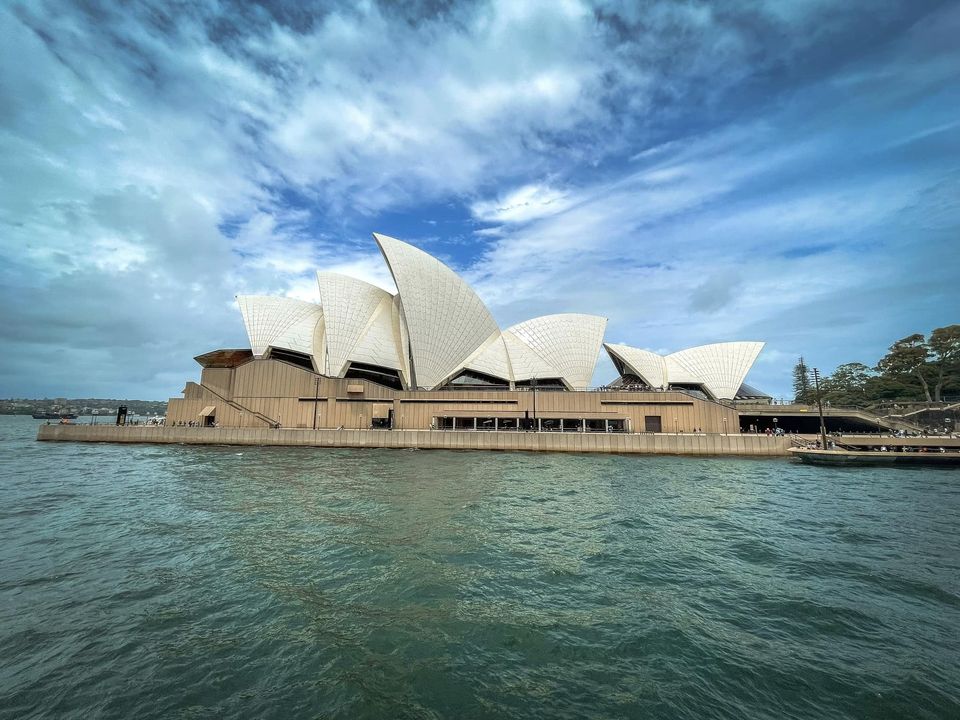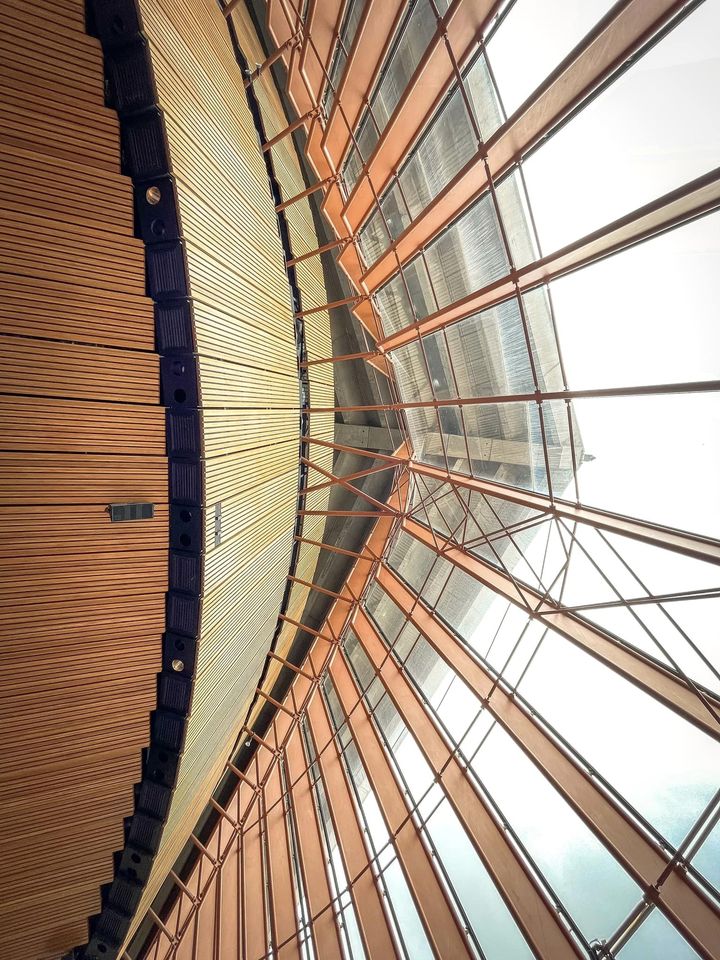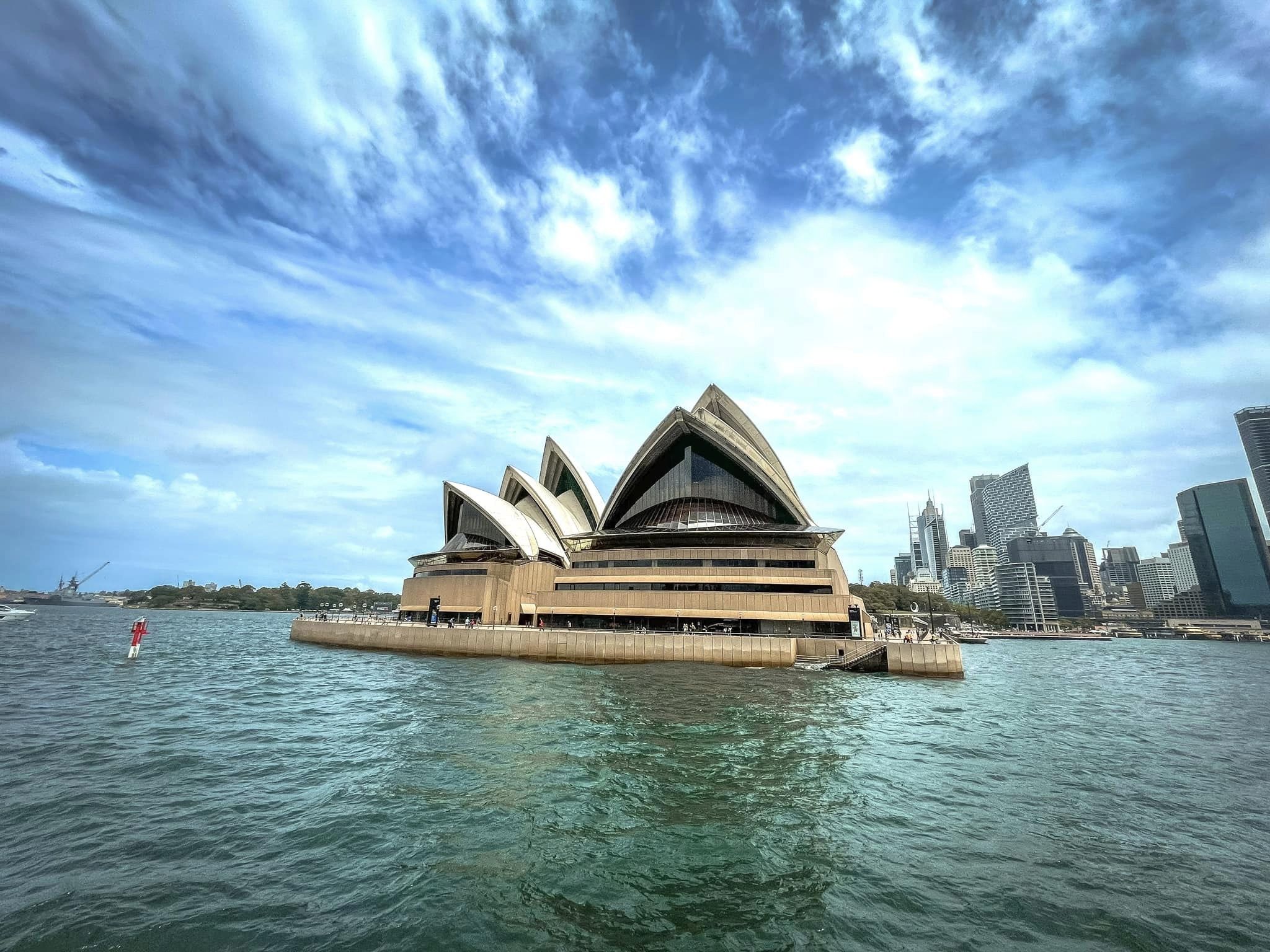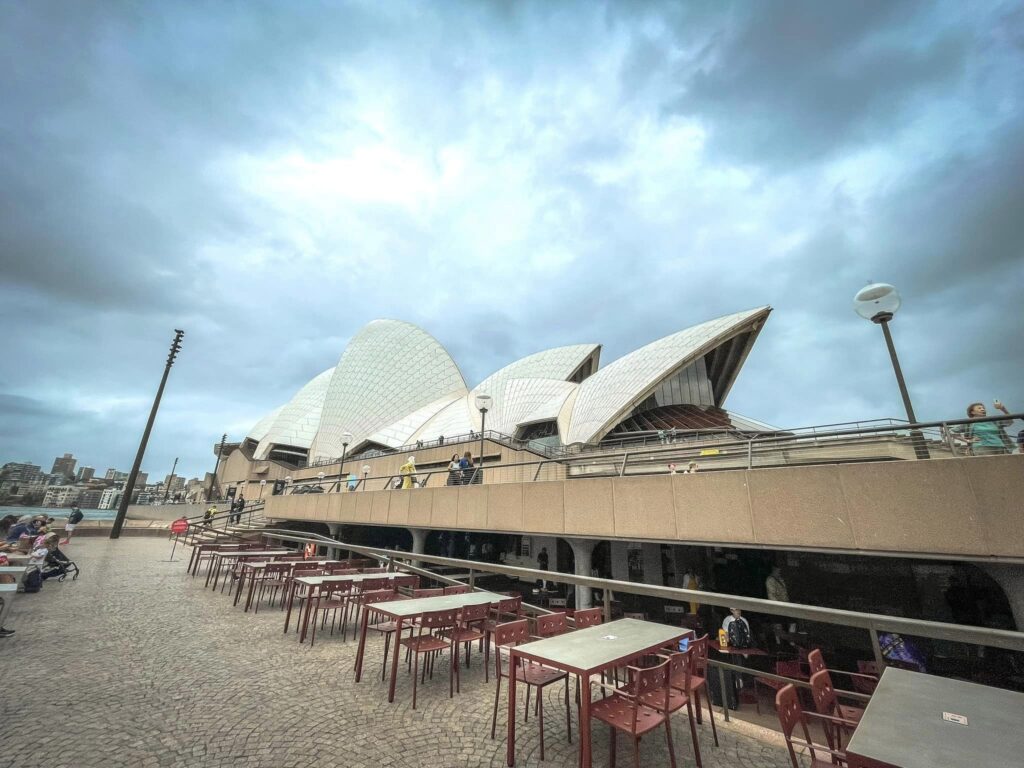Australia, a land down under known for kangaroos and barbecues, boasts an iconic structure that transcends borders — the Sydney Opera House. Those pristine white sails against a stunning backdrop are an instant symbol of Australia from A to Z. But behind this architectural masterpiece lies a narrative of audacious design challenges and disputes that etched its story into the heart of Sydney’s skyline. Let’s dive into the compelling history of the Sydney Opera House.
A Symphony of Ideas Takes Shape
Travel back to the late 1940s, where Sydney was yearning for grand performance venues. The absence of suitable spaces was about to change. After persistent lobbying, the decision was made to gift Sydney a new concert hall. The chosen spot? Bennelong Point, a former tram depot just north of the bustling central business district.

Designing the Impossible
In 1957, a global design competition was launched, attracting 233 entries from 32 countries. The winning design emerged from the mind of Danish architect John Utzon, featuring those iconic curved roofs. Utzon was then summoned to Sydney to oversee the project, with structural engineering entrusted to the renowned British engineer Ove Arup and his team.
Construction Symphony in Three Movements
The opera house construction unfolded in three stages — the podium, the roof, and finally, the interiors. However, the real challenge surfaced during the design of the roof. Its curves posed a formidable challenge, and the original plan of using pre-cast in-situ concrete proved financially implausible.

After four years of relentless design iterations, a breakthrough emerged. The curved sections could be molded from a single sphere, allowing for different ribs to be cast from a common mold. These sections, or ribs, were then connected, forming the roof. Post-tensioning, involving threading cables through the sections and tensioning them, secured the structure. The roof, comprised of 2,400 ribs and 4,000 panels, became a testament to engineering ingenuity.

Controversies That Shaped a Landmark
Throughout its construction, the opera house was marred by controversies — debates about design, construction time, and costs. Tensions escalated, leading to Utzon’s resignation in 1966. The responsibility was handed over to Australian architect Peter Hall, who steered the project to completion.

Curtain Call: The Birth of an Icon
In 1973, a staggering 14 years after construction commenced, the Sydney Opera House finally opened its doors. The cost? An estimated 102 million Australian dollars, a far cry from the initial 7 million projections. Despite its tumultuous beginnings, the opera house emerged as a symbol of Australia, drawing over 10.9 million visitors annually.

In 2007, UNESCO bestowed World Heritage status upon this architectural marvel, acknowledging its unique and timeless significance. The Sydney Opera House stands not just as a venue for performances but as a testament to human creativity overcoming complex challenges.

A Curved Legacy
The Sydney Opera House, with its billowing sails, is more than a venue; it’s a saga of resilience, creativity, and the human spirit triumphing over adversity. Its journey from controversy to global acclaim mirrors the very performances that grace its stages — a symphony of challenges turned into a masterpiece.
Frequently Asked Questions (FAQs)
- What inspired the design of the Sydney Opera House?
- The design, featuring iconic curved roofs, emerged from a global competition won by Danish architect John Utzon.
- How did construction challenges impact the opera house?
- The roof design posed significant challenges, leading to disputes and changes in the design. Construction faced debates about time, costs, and the resignation of architect John Utzon.
- Who took over after Utzon’s resignation?
- Australian architect Peter Hall assumed responsibility and steered the Sydney Opera House to completion after Utzon’s resignation in 1966.
- How long did it take to complete the Sydney Opera House?
- Construction spanned 14 years, with the opera house finally opening in 1973.
- Why did the construction cost exceed initial estimates?
- The estimated cost of 7 million Australian dollars dramatically escalated to approximately 102 million due to various challenges during construction.
- What is the Sydney Opera House’s significance today?
- Beyond being a performance venue, the Sydney Opera House is an iconic symbol of Australia, drawing millions of visitors annually and earning UNESCO World Heritage status in 2007.
- What were the main design challenges faced during construction?
- The primary challenge was the design of the roof, with its complex curves. Various solutions were explored before settling on a design using a single sphere for molding.
- How did controversies impact the construction timeline?
- Disputes and controversies, especially regarding the design and construction costs, led to delays and changes in the original plans.
- What is the annual visitor count for the Sydney Opera House?
- The Sydney Opera House attracts over 10.9 million visitors each year.
- How did UNESCO recognize the Sydney Opera House?
- UNESCO granted World Heritage status to the Sydney Opera House in 2007, acknowledging its unique and enduring significance in global architecture.






